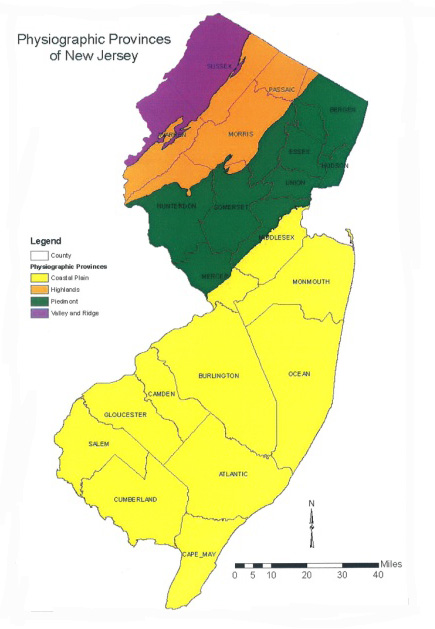
Many states have a designated state bird, flower, fish, tree, rock, etc. And, many states also have a state soil – one that has significance or is important to the state. The “Downer” is the official state soil of New Jersey. Why is Downer important to New Jersey?
What makes the Downer soil so important is its use and prevalence in the State. Most of Downer soils are used as woodlands. Common tree species consist of mixed oaks of chestnut, blackjack, white, black, scarlet and post oaks; hickory; and scattered pitch pines, shortleaf pines, and Virginia pines. Blueberry and bracken fern provide the bush or shrub layer under the trees. These forests are home to white-tailed deer, opossum, mushrooms, lichens and more.
New Jersey is known as the “Garden State,” and Downer soil plays a role in that. About 40% of the soil is used for cultivation of high-value vegetable and fruit crops, such as peppers, tomatoes, cabbage, apples, asparagus, and sweet potatoes.
Uses
In general, soils can be used for agriculture (growing foods, raising animals, stables); engineering (roads, buildings, tunnels); ecology (wildlife habitat, wetlands), recreation (ball fields, play- ground, camp areas) and more. In addition to being the base for New Jersey’s woodlands and high-value vegetables and fruits, Downer soil has additional uses. Producers grow hay, use land that has Downer soil as pasture, and grow nursery stock and sod production. In addition, some of the soil has been used for sand mining and some towns are settled on Downer soil.
Limitations
When a soil cannot be used for one or more of the described functions, it is referred to as a limitation. Soil scientists studied Downer soil and identified that it has moderate limitation. Because of this, only some types of plants can be grown on this soil and it must be monitored for erosion. Drought can be a problem, too, so irrigation may be necessary. Since Downer soil can have a loose sandy surface, it is not suitable for construction of recreation facilities. In some locations, Downer is not good for building a house with a basement or onsite sewage treatment and dispersal field because of the high water table.
Where is Downer found in New Jersey?
Soil scientists divide New Jersey into 4 “ecoregions” shown in Figure 1. Downer formed in the coastal plain area, which accounts for the largest area of New Jersey. It has a generally flat topography dominated by deposits from oceans and seas on top of older metamorphosed rocks. Sand dominates the soil texture but Downer can also have textures with considerable silt and clay fractions. The sediments consist of layers of sand, silt and clay that were deposited alternately in river deltas, and marine environments as the sea level fluctuated. The soil is rather unproductive and acid.

Some areas in this region have an important type of soil mineral called glauconite (greensand) which has been mined in the past for use in fertilizer. Greensands are rich in iron, phosphoric acid, and/or calcium carbonate. The Coastal Plain sediments have been mined for bog iron, glass sand, foundry sand, ceramic and brick clay, and titanium from the mineral, ilmenite, in sand deposits. It continues to supply sand for glass, and sand and gravel for construction. A large expanse of the region comprises the Pine Barrens, a vast area covered mainly by pines, several species of oak trees and sandy acidic soil. The Pine Barrens are adapted to occasional fires that periodically spread in a mosaic pattern across large areas. Sphagnum bogs, coastal salt ponds, cedar swamps, mixed forests, croplands and urban development along the Atlantic coast characterize the remaining part of the Coastal Plain. Most of the crop cultivation is done in the south and southwest portion. The sand formations are productive aquifers and important ground water reservoirs.
By: Wale Adewunmi, Middlesex County Utilities Authority
To receive notices about future blogs, be sure to subscribe to Soils Matter by clicking on the Follow button on the upper right! Explore more on our webpage About Soils. There you will find more information about Soil Basics, Community Gardens, Green Infrastructure, Green Roofs, Soil Contaminants, materials for Teachers and more.
To download the entire Downer: New Jersey State Soil booklet, or to see any of the other state booklets already completed, visit http://www.soils4teachers.org/state-soils.

3 thoughts on “State Soils: New Jersey”